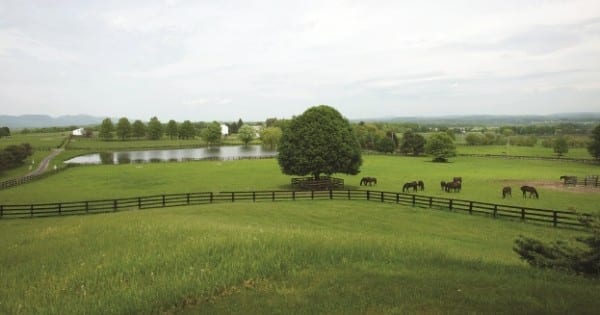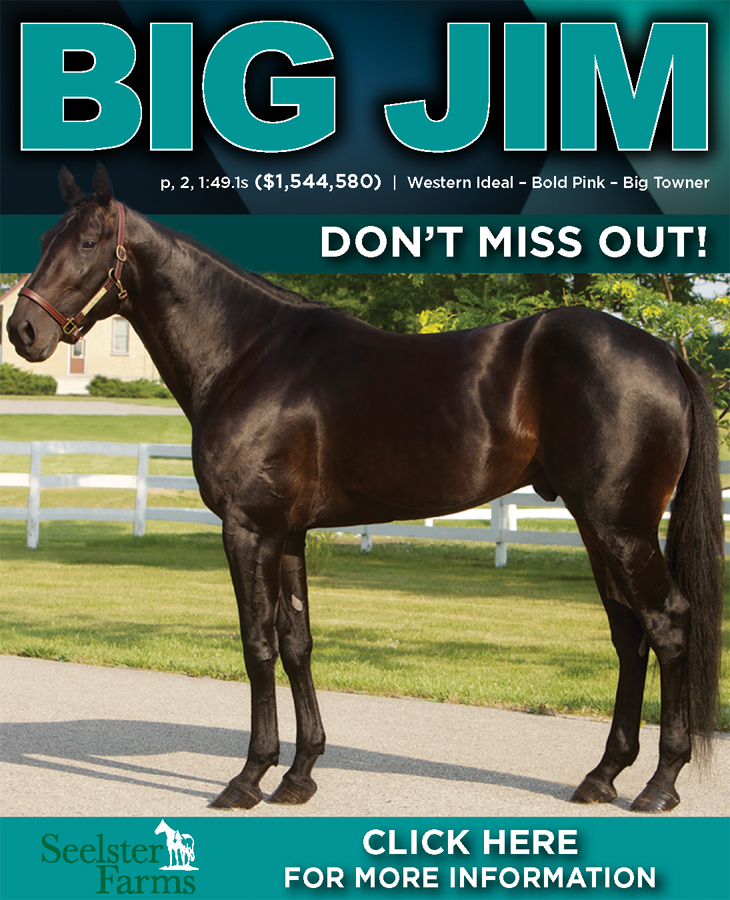

Breeders say Opportunities Abound in New York
by Dave Briggs
photo: Blue Chip Farms is one of many New York breeders that stands to gain from key changes to the resident mare program (by Dave Landry)
Principals from some of the state’s top breeding farms believe those that breed in the state and take advantage of important changes to the resident mare program stand to collect lucrative rewards.
Mike Kimelman, Jr. said those that breed in New York — and do it wisely — are poised to reap tremendous benefits from changes made in recent years to the Residency Bonus Awards program that is part of the New York State Horse Breeding Development Fund.
Kimelman, the director of equine operations for Majestic View Farms in Gardiner, NY — his family founded Blue Chip Farms in nearby Wallkill, NY in 1969 — said he already is hearing stories of breeders getting large checks in the mail and it’s only the beginning.
“I have a friend who has a very mom and pop shop. He got $25,000 in breeders awards last year. I’m sure he’s never spent $25,000 in any given year on stallion feeds in total. That really helps a guy,” Kimelman said.
“The thing a lot of people don’t realize is that in 2013 I think we had a $600,000 breeders awards pool. In 2014, that went to $750,000. In 2015, they paid out $950,000 in breeders awards, which is a pretty good increase. This year, they’re looking to pay out, I would say, right at a million dollars and the interesting thing is, not a lot of people are really aware the foals of 2015 are 100 per cent residency. Everything forward will continue to be 100 per cent residency.
“The people that were paid out breeders awards in 2015 were half-residency plus performance. When those foals race in 2017 from that crop that was foaled in 2015, if somebody has a mare that was a non-resident and the resulting foal makes $200,000 in the New York Sires Stakes program, that breeder will get zero dollars in breeders awards. But, the people that did participate are going to get paid significantly more.”
After looking carefully at the changes to the residency program and realizing there was a declining number of New York-breds produced in recent years, Blue Chip owner Tom Grossman said he changed some of his initial mating decisions in order to take advantage of supply and demand economics.
“When I looked at the number of eligible foals in New York, I rebooked a lot of mares that I had booked out of New York back in New York,” Grossman said.
Kimelman said Steve Jones from Cameo Hills farm of Montgomery, NY is applying similar logic. “Steve said, ‘Look Mike, I make money a lot of ways. I sell a lot of breedings to people. I board mares for people and send bills out to board mares. I sell a lot of horses. But I really believe in the New York program. So much so, that as much as I like horses like Captaintreacherous and Somebeachsomewhere, I’m going to probably breed Glowing Report and Must See to American Ideal this year because I think compared to the horses that I’ll be selling against, I’m going to really get paid for those two.’”
Grossman concedes there may be more “home run potential” for a Pennsylvania-bred, “but by breeding a bunch of mares in New York, your expected return on the residency awards I think is as high or higher than Pennsylvania when you look at how many foals that money is going to be spread over.”
Joe Thomson, owner of Winbak Farms that operates a stallion station in Walden, NY, said the real benefit of breeding in New York is that the New York Sires Stakes program is one of the most lucrative programs in the sport.
“The main thing I like is they have a terrific sires stakes program for the offspring in New York,” Thomson said. “They have several levels to it that allow people to participate.”
He remains, however, a detractor of the state’s policy banning shipped semen outside New York, particularly since Winbak keeps most of its mares at its main farm in Maryland.
“It may be a benefit to people that race there, but I wish they had semen transport because we drive up there two, three times a week and all we do is burn up the roads and take a health risk on travel and spend a lot of money on trucks and trailers,” Thomson said.
Grossman said he understands Thomson’s criticism of the policy restricting shipped semen, but said changing that policy would open a pandora’s box with the state’s politicians.
“I fear we would lose support for the program very quickly if we went to shipped semen. The politicians all are well versed in what the economic and environmental impact is of having true breeding farms there,” Grossman said. “The New York Sires Stakes, like most sires stakes programs, really gets its political capital from being an agricultural pursuit. A lot of people in the industry don’t realize that. I don’t want to pick fights, but horsemen getting rich in overnight races doesn’t really do anything for the politicians that protect us.”
Kimelman agreed. “It’s not free money. It’s money designed to drive a giant agricultural business. It’s important for people to take advantage of it,” he said. “One of the three people that sit on that board is the Commissioner of Agriculture. He’s looking for people to get rewarded the most that participate in New York State the most.”
Grossman said the benefits of the program likely offset recent defections of top stallions Rock N Roll Heaven and Muscle Mass from New York and the likelihood of short-term losses from standing stallions at Blue Chip that are at a competitive disadvantage without shipped semen.
“I have a diversified business,” Grossman said. “Either I’m going to sell more bookings this year to my stallions, or I’m going to get that premium in my yearlings two years from now. It’s one or the other. If my stallions don’t start booking a little bit better this year, yes, short term it’s a pain, but I know there’s going to be that many fewer foals out there and I’ll get it back in the premium of the 40 or 50 New York-bred yearlings that I sell every year.”
Grossman said he’s not surprised more breeders haven’t taken advantage of changes to the residency program. “I’m constantly reminded that people don’t realize it until the checks actually hit their mailbox. Way back when, when we first got VLTs approved in New York… you didn’t really see the premium come to New York-breds until they actually saw the first New York Sires Stakes purse check hit their bank account.
“I do think the (New York-bred) yearlings will sell at a bigger premium and I do think it should spur our boarding business, as well.”
Increased bonus money for those that take full advantage of the residency program is, well, a bonus.














